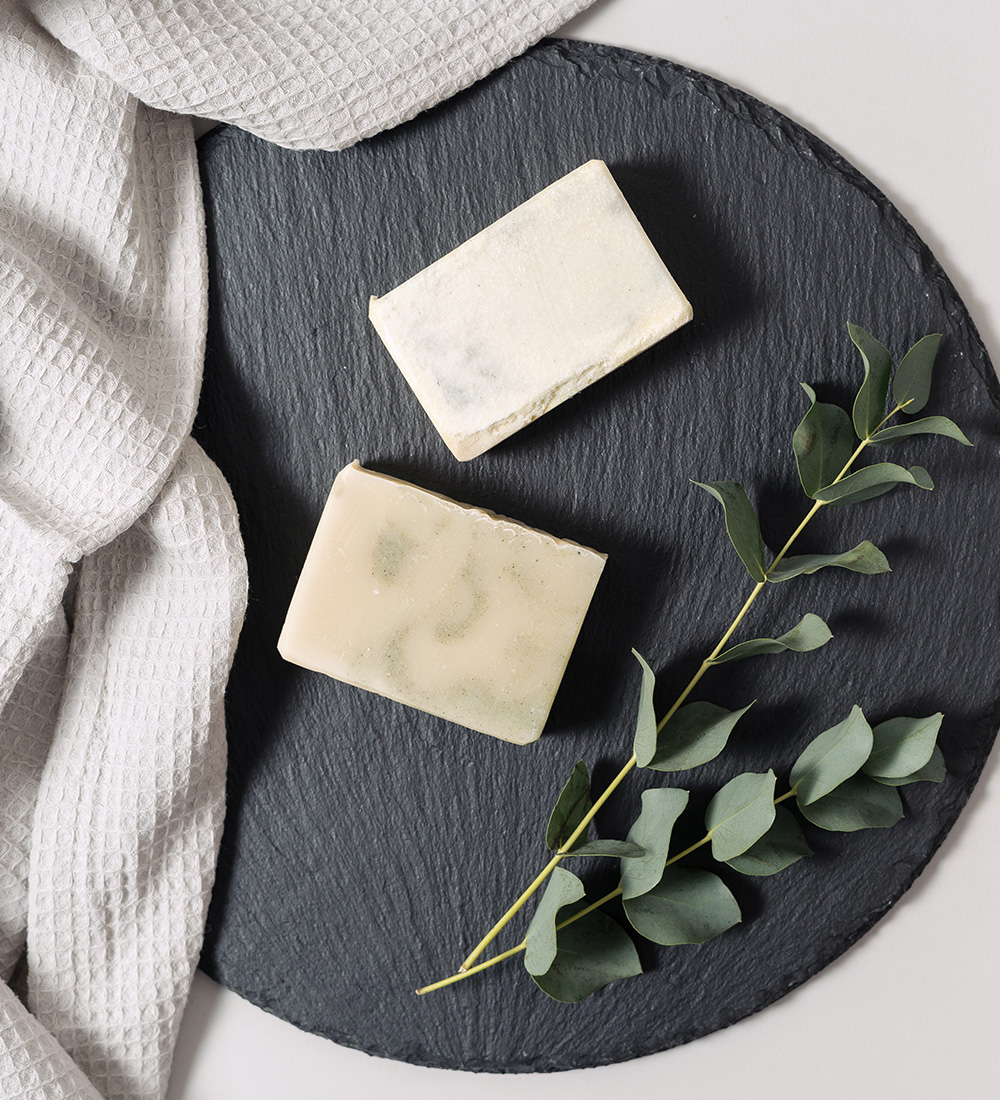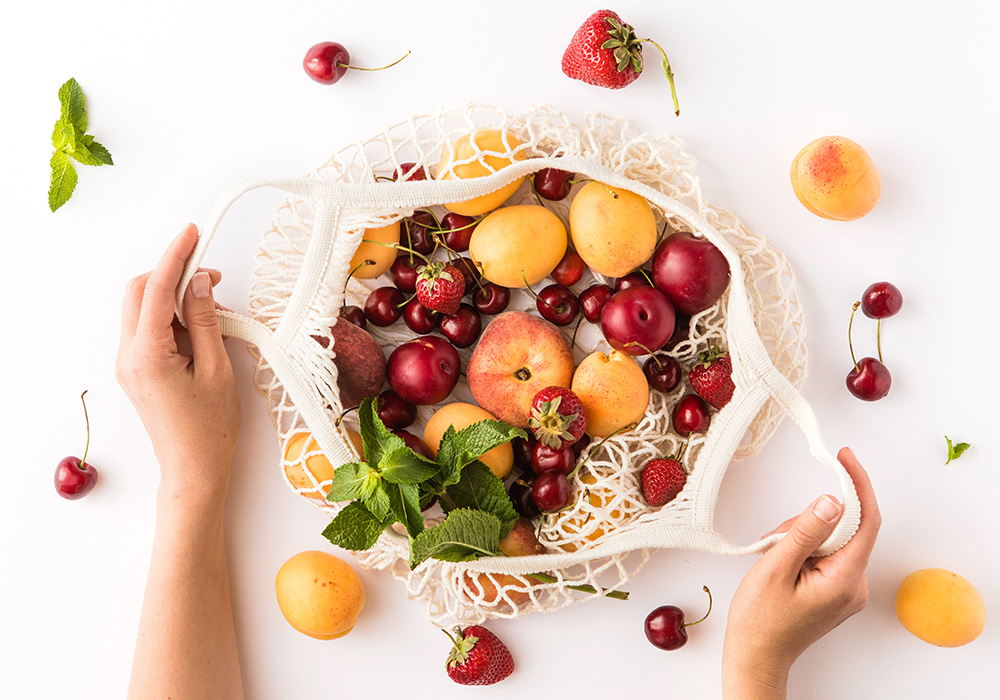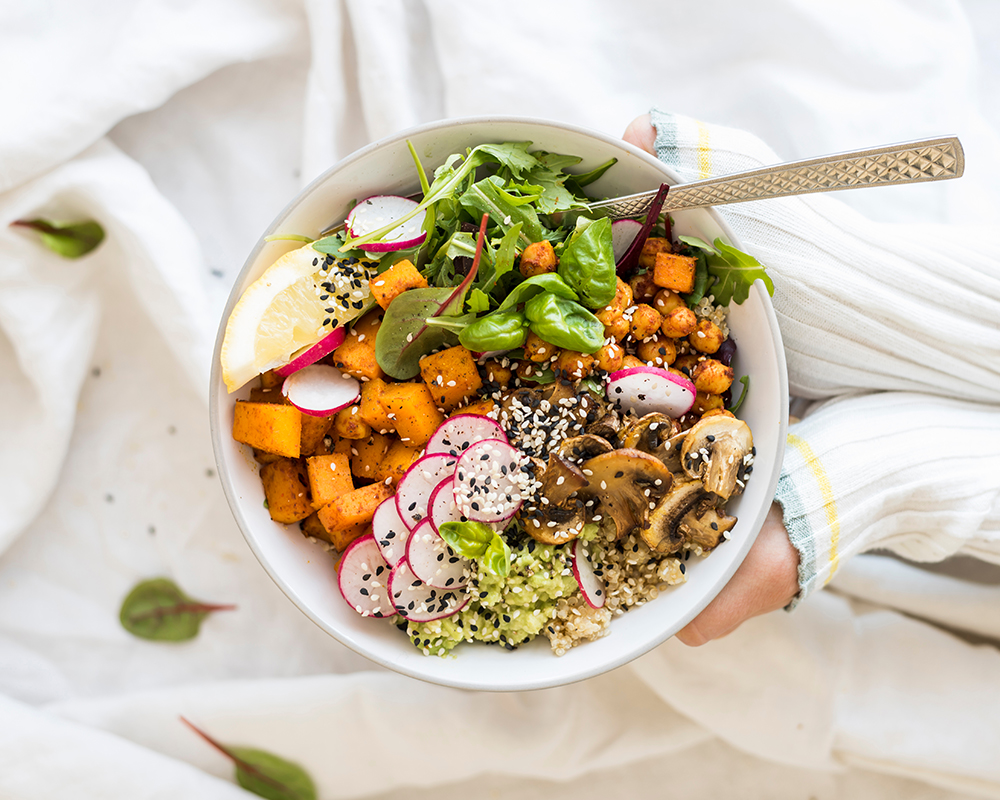Go greener: Tips for making your daily life more sustainable
There’s no Planet B! Fundamentally, everyone knows that we need to do something to stop the progress of climate change. We also recognise our responsibility as a company and our resource-friendly production methods, sustainable materials and durable products are taking us on a path towards a sustainable future. But we can’t save the planet on our own; we all need to play our part in ensuring that the world remains habitable for future generations. The good news is that creating a more sustainable lifestyle isn’t that complicated. We hope that our tips for making your daily life greener will inspire you to take small steps that, when added together, can achieve great things!
1. Switch to plastic-free hygiene products
We’ve all been there, with bottles of shampoo and shower gel lined up in a row in our shower cubicle or on the bathroom shelf. Once they’re empty, they just end up in the bin and then in huge landfill sites. Not really that good for the environment! Fortunately, the industry has recognised that it needs to do something. If you make a conscious effort to look, you will find that even the most popular toiletries’ brands now offer plenty of alternatives – such as solid shampoo and shower gel bars – which are sometimes available with no packaging at all. Disposable personal hygiene products that are harmful to the environment can also be swapped for products that are considerably more environmentally friendly. For example, reusable cotton pads made of fabric are good for the environment and also for your purse – a nice bonus! Their durability compared to the alternative disposable product means that the one-off price of 1 or 2 euros at the most will soon pay for itself.
The greenest way to achieve sustainable personal hygiene is to make your own beauty and care products. You will find plenty of instructions on Pinterest or in creative blogs for making home-made body butter, deodorant, exfoliator or lip care products. That way, a sustainable lifestyle is also fun! Above all though, home-made creations are completely free of chemicals and unnecessary additives and only contain natural ingredients like coconut oil, shea butter and almond oil. If you pack them in pretty jars, they also make the perfect gift for your mum or best friend!








2. Buy food that is loose, organic and locally produced
Reducing waste when shopping is easier said than done. Lots of fruit and vegetables are still sold in plastic packaging, to say nothing of other products like yogurt, milk and convenience foods. As well as buying loose goods, sustainable shopping also means buying local products that haven’t been transported over long distances. Do you really need that papaya from Hawaii? The first ports of call for buying local and loose foods are, of course, weekly markets and organic or packaging-free shops. Of course, these purchases are often expensive and won’t always fit within your household budget, which is why it can be better to opt for loose fruit and vegetables from the supermarket or dairy products in glass bottles. Instead of using a new paper or plastic bag every time, take your own fabric bag with you. Make sure you also check the ingredients in your foods and cosmetics. Many products now contain palm oil, but its production is causing huge areas of rainforest to be destroyed. This destruction of the rainforests impacts the environment, biodiversity, the climate and human rights, as entire population groups are being driven off their land by the cultivation of oil plantations.
3. Eat greener
Our diet also affects the climate as around 15% of all greenhouse gas emissions are actually down to what we eat. The worst offenders for the climate? Our steak from Argentina or chicken packed in plastic from the self-service counter. Large-scale livestock farming produces more greenhouse gases in total than all the aeroplanes, trains and cars in the world combined. If you want to eat greener, reducing your meat consumption is becoming harder to avoid. Even though a vegetarian lifestyle does reduce your environmental footprint significantly, the impact of buying fruit and vegetables from faraway countries should not be ignored. However delicious they may be, air-freighted mangoes, pineapples and avocados are not the most sustainable choice – unfortunately, these kinds of exotic foods are not grown in Upper Austria! Huge areas of pine forest are being cut down in order to grow avocados and their cultivation also uses fertilisers and pesticides and consumes large quantities of water. Did you know that there are locally grown and much cheaper alternatives for most trendy superfoods? They might not be quite so Instagram-friendly, but they are
just as healthy! For example, instead of avocados, you can just more add walnuts to your diet. These grow on native trees and contain even more polyunsaturated fatty acids than their exotic counterpart. You can also replace chia seeds with linseeds, goji berries with blackcurrants and quinoa with millet, for example.




4.Choose sustainable fashion shopping
For us, slow fashion is a key factor when we develop new collections. Investing in high-quality, durable products is better than jumping on every short-lived trend because, to a large extent, quality also means sustainability. The more we consume, the more will be produced, using up valuable resources every time. That’s why we are committed to creating contemporary yet timeless designs that will outlast every quick trend and also keep the wearer happy for a long time. Conscious shopping also means selecting materials carefully. Using leather from resource-friendly production by certified suppliers, recyclable materials and natural fabrics, like we do, all helps to reduce our environmental footprint. For example, we use ECONYL® fibre-based fabric (regenerated nylon) for our HÖGLVISION product line. This innovative material is made from old fishing nets, industrial textile waste and discarded carpets and can be recycled an infinite number of times.
As a general rule, fashion should not be a disposable commodity, as valuable resources are consumed to make every new product. Another good way to shop for sustainable fashion is to buy from second-hand shops and clothing exchanges, which are also available online. The retro trend is now causing real hype around vintage pieces! Who doesn’t love to wear a unique branded piece that tells its own story and also helps the environment and your purse?
Discover our sustainable HÖGLVISION collection:
5. Use alternative means of transport
After our diet, how we get around makes up the biggest part of our environmental footprint. Obviously, air travel or car journeys have a significant impact here, so it is much better to use public transport – like the train, for example. Spend a little time browsing through offers from rail operators and you’ll come across some great options for getting to your destination quickly and conveniently by train. For example, you can go from Salzburg to Sylt literally in your sleep. You can travel quite easily overnight in a comfortable sleeper carriage and then breathe in the fresh air first thing in the morning as you arrive on the dream island and start your holiday.
Aside from holiday travel, if you want to minimise your carbon emissions then you can’t afford to overlook cycling and using public transport. Having said that, alternative mobility concepts are also available, particularly in cities – such as car sharing, where several people travel in one car that can be booked via an app. According to a study by the Bundesverband CarSharing (the umbrella association of German car sharing providers), one car sharing vehicle can replace around 15 privately owned cars. This trend has great potential for the future, as the principle involved – measured against the fixed costs of a private car – also offers genuine cost benefits.


Just by following these few tips, we can all play a valuable part in ensuring that our world remains habitable in the future. Obviously, we can’t stop climate change on our own, but if we pull together and live more consciously in our daily lives, we will be able to move gradually towards a more sustainable future.
